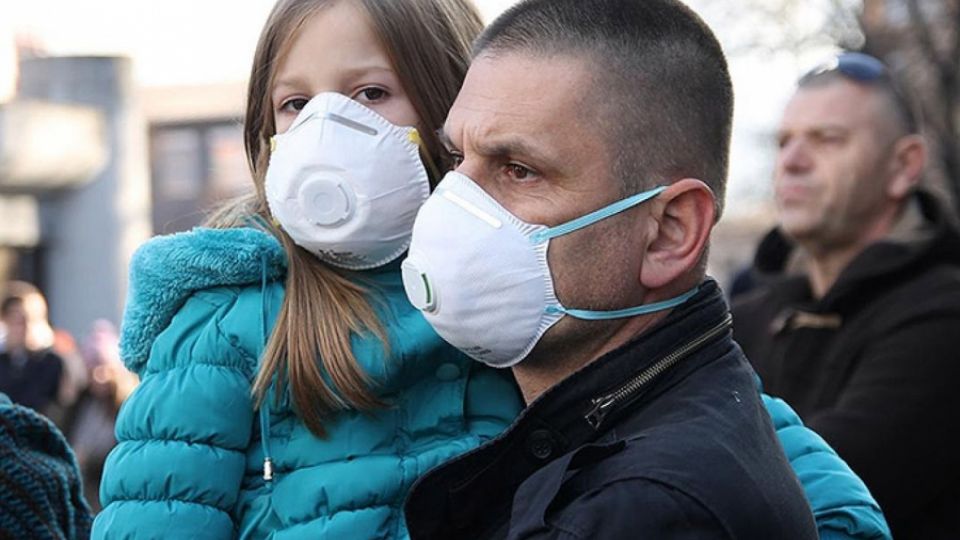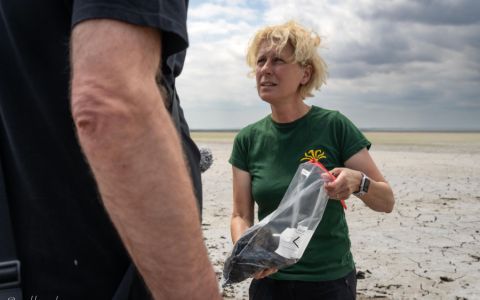ArcelorMittal Zenica, the Tuzla thermal power plant, and the chemical factories in Lukavac. Those were the main culprits for the industrial air pollution of Bosnia and Herzegovina (BiH) in the last few years. However, according to a recent analysis, the data presented by the polluters is full of errors, and the public does not have access to full information on their environmental impact. Also, a number of possibly worse polluters keep silent and hide their emission data from the public [1]. No figures are available in one part of the country where significant polluters are also located such as the Gacko, Stanari, and Ugljevik coal power plants. Experts are calling for ratification of the PRTR Protocol and enforcement of domestic law.
The top ten contributors to the genuinely terrible air quality are based on the official data and put together by the Arnika Association (Czech Republic) and Eko forum Zenica. The lists took into account the data from major polluters emitting chemicals dangerous to human health and the environment in amounts above the EU register E-PRTR. All details are available on Arnika's website [2].
“When comparing the data from 2015 until today, we can see a drop in the amount of data that was submitted - over 50%, from 931 in 2015 to 462 in 2017. Emissions from the European PRTR thresholds, such as the Kakanj power plant or the cement factories in Kakanj and Lukavac, did not report any figures in 2017,” says Martin Skalský , chair of the Citizens Support Center of Arnika.
Top three polluters of air in Bosnia and Herzegovina 2015-2017

This table shows the annual polluters (in tons per calendar year)
According to Milan Havel, the main author of the analysis, it is difficult to present definitive conclusions because of missing and incorrect data, but some tendencies have been clearly shown. “Since 2011, ArcelorMittal Zenica has been holding the top position in the emissions of dust, as well as carcinogenic and potentially carcinogenic substances. The drop in ArcelorMittal's emissions for 2017 seems to be the outcome of a decline in steel production rather than technological improvements,” Havel explains.
"Not surprisingly, the thermal power plants at Tuzla and Kakanj can be considered the biggest polluters of carbon dioxide, thus contributing to climate change; and together with Sisecam Soda Lukavac, they are the biggest polluters with acid rain. On the other hand, there are some improvements, such as the significant reduction in dust and several other substances in the case of the Kakanj cement factory,” said Havel, Arnika's expert on industrial air pollution.
Red dot on the map of Europe
The country's largest coal-fired thermal power plant is located in the city of Tuzla which is located in the north-east of the country. This power plant is the largest source of sulfur oxide emissions, it produces 50,000 to 60,000 tons a year according to Samir Lemeš from Eko forum Zenica.
"Sulfur oxide emissions from the Tuzla power plant are roughly three times the sulfur oxide emissions from all the power plants operated in the Czech Republic by its largest electricity producer, CEZ," stated Lemeš, a professor at Zenica University. For comparison, all major sulfur dioxide polluters combined released about 97,000 tons of SO2 in 2016.
The Tuzla Power Station, operated by Elektroprivreda BiH, also releases around 5,000 tons of nitrogen oxides every year. "It is reasonable to assume that potential modernization and investments into a better technology would cause these high-emissions to drop by 90%," concludes the Bosnian-Herzegovinian expert.

Global ambient air pollution: PM2.5 for the year 2016 (µg / m3) [3]
Just outside Tuzla is the town of Lukavac. Here, various sources of emissions can be found, but the largest are the Sisecam Soda chemical factory and GIKIL coke plant. The whole region is heavily polluted with dust particles and dominates the list of Europe's cities' bridges polluted by PM2.5 for 2018 with an annual average of 55.6 µg / m3 [4] in Ghent (Belgium) and London (United Kingdom), respectively [5].
The long-established top polluter in the region is the world's largest steel producer, ArcelorMittal. Its factory in Zenica tops the list of particulate matter emissions after releasing over 2,000 tons of PM10 in 2014 and around 1,500 tons in 2015 and 2017. "ArcelorMittal is the largest source of heavy metals, such as cadmium, lead, and nickel, of all Bosnian operations,” commented Havel.
In the top tens for 2016, ArcelorMittal Zenica placed five out of nine when comparing of the biggest polluters in the Western Balkan country. The top ten also includes other toxic chemicals such as carcinogenic, reprotoxic, or mutagenic substances and greenhouse gases. [6].
No data on emissions from the industrial sources in Republika Srpska of BiH is available despite the relevant law having been in effect since 2003 [7].
“Bosnia and Herzegovina suffers from some of the worst breathing conditions in the Western Balkans. On top of that, the official data is insufficient, incomplete, and mostly hidden from the public. It seems that the authorities try to hide the real figures about air quality, pollution emissions, and health impact instead of admitting the problem and trying to find proper solutions. Unfortunately, they still use the poor economic and social situation as an excuse, allow polluters to continue with business as usual in order to keep up employment, and do almost nothing to develop or attract green investments,” Professor Lemeš concludes.
[1] Lethal air pollution with no responsibility. The people of Bosnia and Herzegovina lack information and efficient protection by law (Arnika.org)
[2] Top of the biggest polluters of Bosnia and Herzegovina
[3] Global ambient air pollution . Map of WHO compares global data on PM2.5 and PM10 for 2014, 2016, and 2018. (Maps.who.int)
[4] Worldʼs bridge polluted cities 2018 (PM2.5) (AirVisual.com)
[5] See the data for Ghent and London on the World Air Map (Air.plumelabs.com)
[6] Biggest polluters of Bosnia and Herzegovina: ArcelorMittal steelworks and Electric power stations (Arnika.org)
[7] The Hydrometeorological Institute of the Republic of Srpska (Rhmzrs.com) started to collect air pollution data in 2017







